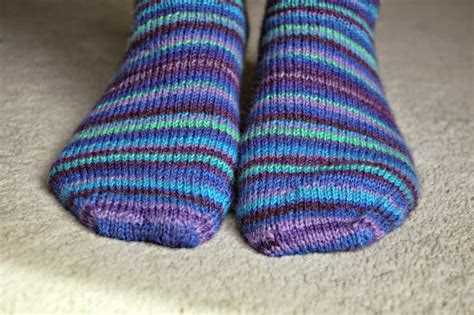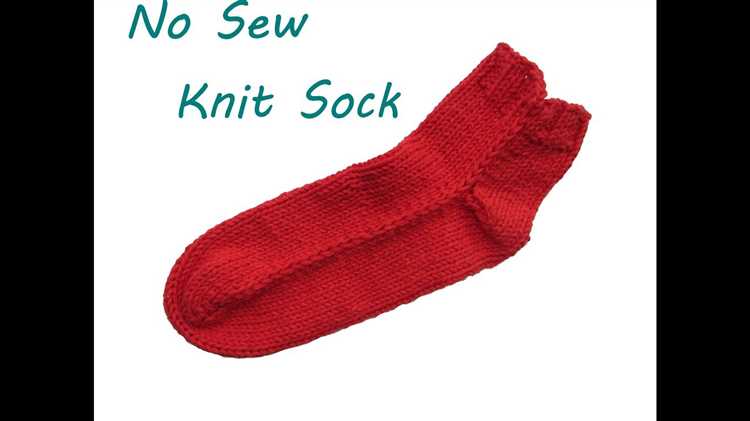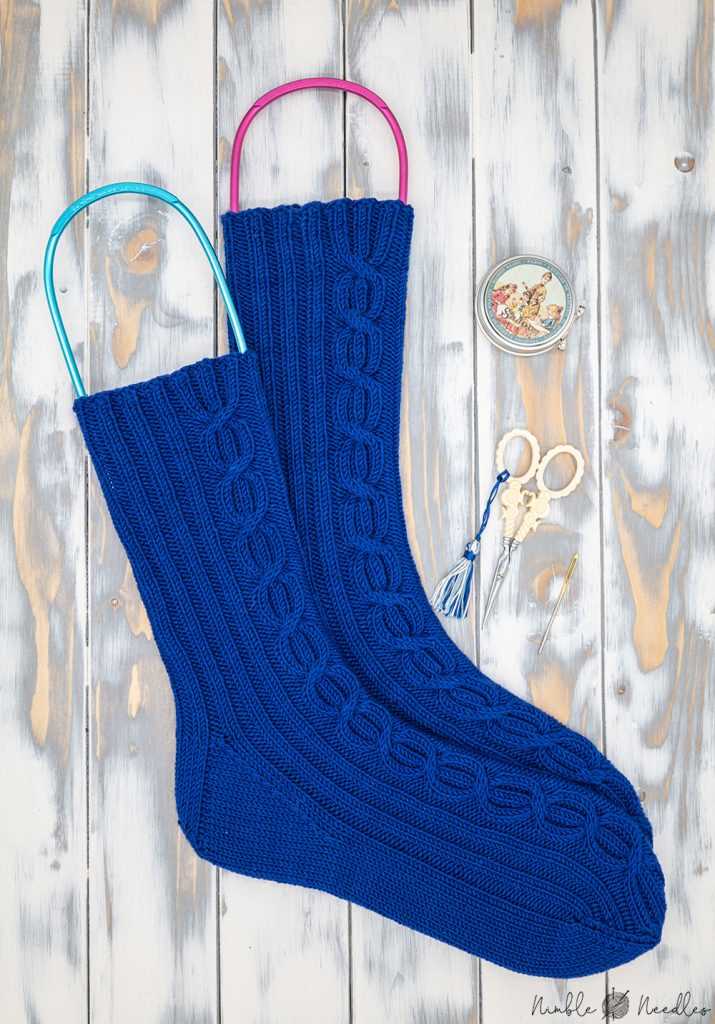Knitting socks can be a fun and rewarding project for beginners to tackle. While many sock patterns require the use of double-pointed needles or circular needles, you can also knit socks using just a pair of straight needles. In this beginner’s tutorial, we will guide you through the process of knitting socks step by step, using only straight needles.
Materials:
Before you begin, gather the following materials:
- A pair of straight knitting needles, preferably in a size suitable for your chosen yarn
- A ball or skein of sock yarn, enough to complete the pair of socks
- A set of double-pointed needles of the same size (optional, for knitting the heel)
- Tapestry needle for weaving in ends
Step 1: Casting On
Start by casting on the desired number of stitches for your sock. Generally, a good starting point is around 60 stitches, but this can vary depending on the thickness of your yarn and the size of your foot. Using the long-tail cast on method or any other method you prefer, cast on your stitches using your straight needles.
Note: For a ribbed cuff, you can use a smaller size needle and knit a few rows of k1, p1 ribbing before switching to your main needle size.
Pro Tip: You can place markers or tie small pieces of yarn around your needles at certain points to help you keep track of important sections in the pattern, such as the beginning of the round or the heel flap.
Gather your materials
Before you start knitting socks with straight needles, gather all the necessary materials:
- Straight knitting needles: You will need a pair of straight knitting needles. The size of the needles will depend on the yarn you choose. Check the yarn label for recommended needle sizes.
- Yarn: Choose a yarn that is suitable for socks. Look for yarn labeled as “sock weight” or “fingering weight.” You can choose any color or pattern you like.
- Tape measure or ruler: You will need a tape measure or ruler to measure your gauge and the length of the socks.
- Darning needle: A darning needle is used for weaving in ends and sewing seams.
- Scissors: You will need scissors to cut the yarn.
- Stitch markers: Stitch markers are helpful for marking the beginning of the round and any other important points in your pattern.
- Row counter: A row counter will help you keep track of the number of rows you have worked.
- Sock pattern: Find a sock pattern that is suitable for straight needles. Look for beginner-friendly patterns to start with.
Once you have gathered all your materials, you’re ready to start knitting your socks with straight needles!
Choose the right yarn and needle size
When knitting socks with straight needles, it is important to choose the right yarn and needle size to achieve the desired fit and comfort. Here are some factors to consider:
- Yarn Weight: The thickness of the yarn you choose will determine the overall size and warmth of the socks. Lighter weight yarns, such as fingering or sock weight yarns, are ideal for summer socks or for a more delicate feel. Heavier weight yarns, such as DK or worsted weight, are better suited for winter socks or for a thicker and more cozy texture.
- Needle Size: The needle size you use will also affect the size and drape of the socks. Smaller needles will create a tighter fabric, while larger needles will result in a looser fabric. It is important to check the recommended needle size on your yarn label and adjust accordingly to achieve the desired gauge.
- Gauge: Gauge refers to the number of stitches and rows per inch in your knitting. It is crucial to match the gauge specified in the pattern or the yarn label to ensure that your socks will fit properly. You can achieve the correct gauge by swatching with your chosen yarn and needle size before starting your sock project.
- Fiber Content: Consider the fiber content of the yarn you choose, as it will affect the comfort and durability of your socks. Natural fibers like wool, alpaca, or bamboo are commonly used for socks because they provide good insulation and wick away moisture. Synthetic fibers like nylon or acrylic can be added to enhance durability and stretchiness.
By considering these factors and choosing the right yarn and needle size, you can ensure that your knitted socks will not only be attractive but also comfortable and functional. Happy knitting!
Measure your foot and calculate the size
Before you begin knitting your socks, it’s important to measure your foot to ensure the perfect fit. Here’s how to do it:
- Start by placing your foot on a piece of paper and trace the outline of it using a pen or pencil. Make sure you’re standing upright and your weight is evenly distributed.
- Measure the length from the tip of your longest toe to the back of your heel. This will be your foot length measurement in inches or centimeters.
- Next, measure the circumference of the widest part of your foot, typically around the ball of your foot. This will be your foot circumference measurement.
Once you have your foot length and foot circumference measurements, you can use them to calculate the size of your socks. Most sock patterns will provide a size chart with recommended measurements, so you can choose the appropriate size based on your measurements.
If you’re designing your own socks or using a pattern without a size chart, you can use the following general guidelines:
| Foot Length (inches/cm) | Sock Size |
|---|---|
| 8-9/20-23 | Small |
| 9-10/23-25 | Medium |
| 10-11/25-28 | Large |
Keep in mind that these are just general guidelines, and the best way to ensure a perfect fit is to try on the sock as you go and make adjustments accordingly.
Cast on stitches and start the cuff
Before you begin knitting your socks, you’ll need to cast on the required number of stitches. To do this, follow these steps:
- Hold one straight needle in your right hand and leave the other needle free in your left hand.
- Make a slipknot by creating a loop with the yarn and pulling the end through it. Adjust the loop size to fit comfortably around the needle.
- Slip the knot onto the right needle, holding the knot in place with your thumb and forefinger.
- With your left hand, hold the yarn coming from the ball taut, and with your right hand, use the other needle to enter from front to back through the loop on the left needle.
- Bring the right needle under the left needle and up through the loop, catching the yarn behind it.
- Pull the right needle and the yarn through the loop, creating a new stitch on the right needle. Slip the new stitch onto the left needle.
- Repeat steps 4-6 until you have cast on the desired number of stitches.
Once you have cast on all your stitches, you can start knitting the cuff of your sock. The cuff is usually worked in a ribbing pattern (such as knit 1, purl 1) to create a snug and stretchy edge. Here’s how to start the cuff:
- Hold the needle with the cast on stitches in your right hand.
- Insert the left needle into the first stitch from front to back.
- With your right hand, hold the working yarn behind the needle and use the right needle to knit the first stitch. Bring the right needle from left to right through the first stitch on the left needle.
- Slide the knit stitch onto the left needle without twisting it.
- Repeat steps 2-4 for the remaining stitches in the row.
Now you’re ready to continue knitting the cuff of your sock according to the pattern you’ve chosen.
Knit the leg and create a heel flap
To knit the leg of the sock, continue working in the established stitch pattern until the leg measures your desired length. This is the part of the sock that will cover your calf.
Once you’ve reached the desired length for the leg, it’s time to create the heel flap. The heel flap provides reinforcement to the back of the sock and helps prevent wear and tear.
To create the heel flap, you will be knitting on only a portion of the stitches. Typically, the heel flap is worked on about half of the total stitches.
- Count your stitches and divide the total number by 2. This will give you the number of stitches you’ll be working on for the heel flap.
- Place the other half of the stitches on a stitch holder or separate needle.
- Using your main needle, knit across the first half of stitches.
- Turn your work and purl across the same stitches.
- Continue knitting one row and purling one row, repeating these two rows, until the heel flap measures your desired length. This is typically about 2 inches (5 cm).
By knitting on only a portion of the stitches while creating the heel flap, you will create a flat, rectangular piece of knitting that will be folded in half later to form the heel of the sock.
Once you’ve completed the heel flap, you’ll be ready to turn the heel and create the foot of the sock.
Turn the heel and shape the gusset
Turning the heel is an important step in knitting socks as it creates the curve that fits the heel and instep of the foot. Following these steps will help you shape the heel and gusset for a comfortable fit:
- Continue knitting in the pattern as established until the desired length from the back of the heel is reached.
- Divide the stitches onto three needles: Needle 1 will hold half of the stitches, Needle 2 will hold the other half, and Needle 3 will be your working needle.
- Using Needle 3, knit across the first half of the stitches on Needle 1.
- Purl across the remaining stitches on Needle 1.
- Turn your work to the wrong side.
- On Needle 3, slip the first stitch purlwise.
- Purl across the next stitches until you reach the center stitch of Needle 2.
- Purl the two center stitches together.
- Purl one more stitch.
- Turn your work to the right side.
- Slip the first stitch purlwise.
- Knit the stitches until you reach the center stitch of Needle 2.
- Knit the two center stitches together.
- Knit one more stitch.
- Repeat steps 5-14 until all the stitches from Needle 1 and 2 are worked.
- You should now have a V-shaped heel formed by the decreases. The remaining stitches on Needle 3 will be the new instep and the rest of the stitches on Needle 2 will be the other side of the gusset.
Congratulations, you have now turned the heel and shaped the gusset! The next step will be to continue knitting in the round to complete the foot and toe of the sock.
Knit the foot and toe
Continue knitting the stitches in the round until you have reached the desired length for the foot. This length will vary depending on the size of the sock and the person’s foot that it is being made for. It is recommended to measure the foot and compare it to a sock template or sizing chart to determine the proper length.
Once the foot has reached the desired length, it is time to begin shaping the toe. The toe is usually tapered to provide a comfortable fit and prevent excess fabric from bunching up in the shoe. There are several methods for shaping the toe, but one common method is the standard decrease method.
- First, divide the stitches evenly onto two or three double-pointed needles or onto a circular needle if you prefer magic loop method.
- Begin the decrease rounds by knitting until 3 stitches remain on the first needle.
- Then, knit 2 stitches together (K2tog), and knit the last stitch.
- Repeat these decrease rounds every other row until you have decreased the total number of stitches by about half.
- Once you have decreased the desired number of stitches, you can close the toe by either grafting the stitches together using the Kitchener stitch, or by using the three-needle bind off method.
After closing the toe, weave in any loose ends and your sock is complete!
Repeat these steps to knit the second sock, making sure to keep track of your stitch counts and measurements to ensure a matching pair.
Finish off and weave in ends
Once you have finished knitting your socks, it’s time to finish off and weave in the loose ends of yarn. This will help to secure your stitches and give your socks a polished look.
- Cut the yarn: Using your scissors, snip the working yarn, leaving a tail of about 6-8 inches.
- Thread the yarn: Thread the tail of yarn onto a yarn needle. This will make it easier to weave in the ends.
- Weave in the ends: Starting at the cuff of the sock, insert the yarn needle into the back of the stitches and weave the needle through the fabric. Continue weaving in the ends until the tail is completely hidden. Repeat the same process for the other loose ends of yarn.
TIP: It’s important to weave in the ends securely to prevent them from unraveling over time. You can weave the ends in a zigzag pattern for added security.
| Pros | Cons |
|---|---|
|
|
By following these steps, you’ll be able to finish off your knitted socks and weave in the ends like a pro! Your finished socks are now ready to be worn or gifted to someone special.
FAQ:
Are straight needles necessary for knitting socks?
No, straight needles are not necessary for knitting socks. You can also use circular needles or double-pointed needles.
What materials do I need to knit socks?
To knit socks, you will need yarn, straight needles, a tapestry needle, stitch markers, and scissors.
Can I use any type of yarn for knitting socks?
While you can use any type of yarn for knitting socks, it is recommended to use a yarn that has some wool content for warmth and durability.
Are socks difficult to knit for beginners?
Knitting socks can seem challenging for beginners, but with this step-by-step guide and some practice, it can be a fun and rewarding project.
How long does it usually take to knit a pair of socks?
The time it takes to knit a pair of socks can vary depending on your knitting speed and the complexity of the pattern. It can take anywhere from a few days to a few weeks.
Can I customize the size of the socks?
Yes, you can customize the size of the socks by adjusting the number of stitches and the length of the foot and leg. The tutorial provides instructions on how to do this.


